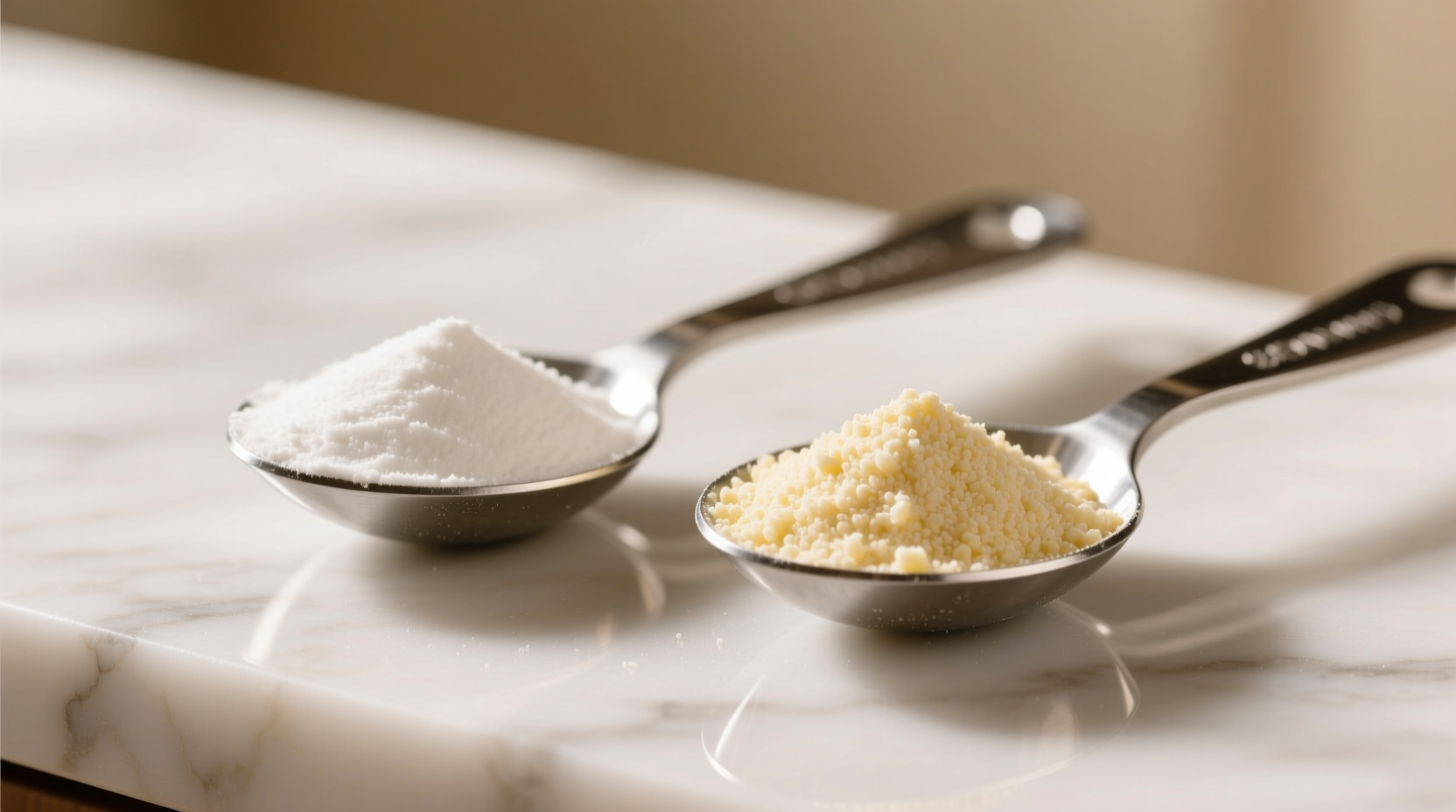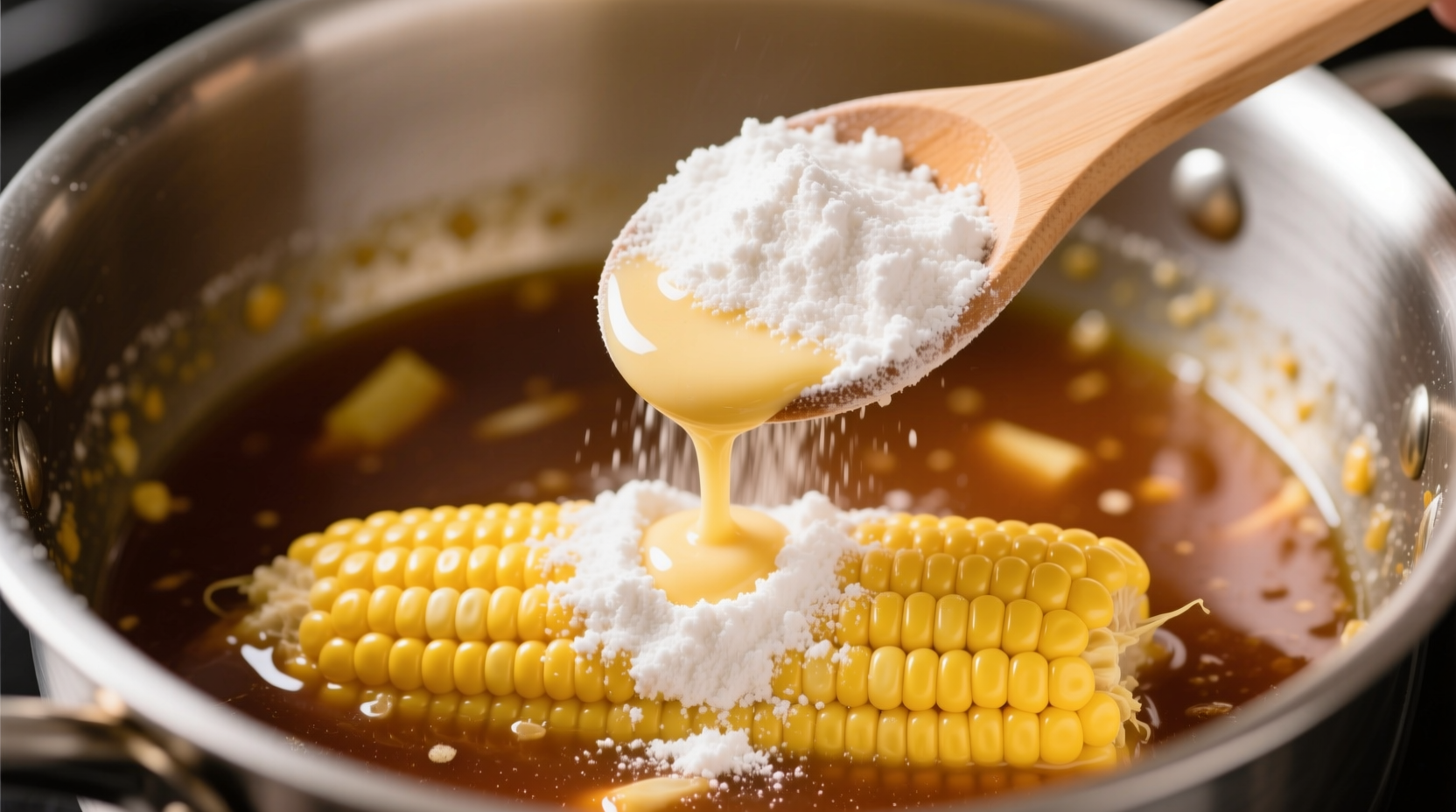Yes, you can replace potato starch with cornstarch in most recipes using a 1:1 ratio, but with important considerations for texture, temperature sensitivity, and recipe type. Cornstarch creates a clearer gel than potato starch but requires higher cooking temperatures and may break down more easily in acidic or frozen applications.
Running out of potato starch mid-recipe? You're not alone. Many home cooks face this pantry dilemma, especially when preparing gluten-free dishes or Asian cuisine where potato starch is common. Understanding how to effectively substitute cornstarch for potato starch can save your recipe while maintaining the texture and consistency you need.
Understanding the Key Differences Between Potato Starch and Cornstarch
Before making substitutions, it's crucial to understand how these two starches behave differently in cooking. While both function as thickeners, their molecular structures create distinct performance characteristics that affect your final dish.
| Property | Potato Starch | Cornstarch |
|---|---|---|
| Thickening Temperature | 140°F (60°C) | 180-190°F (82-88°C) |
| Gel Clarity | Clear, glossy | Slightly cloudy |
| Freeze-Thaw Stability | Excellent | Poor (breaks down) |
| Acid Tolerance | Good | Moderate (breaks down in high acidity) |
| Thickening Power (per cup liquid) | 2-3 tablespoons | 1.5-2 tablespoons |
This comparison comes from research documented in On Food and Cooking: The Science and Lore of the Kitchen by Harold McGee, a respected culinary science reference that explains how different starches interact with liquids at molecular levels. The USDA FoodData Central also confirms these structural differences between starch types.
When Cornstarch Works Well as a Potato Starch Substitute
Cornstarch successfully replaces potato starch in many common applications, but knowing which situations work best prevents kitchen disasters. Here's where you can confidently make the swap:
For Thickening Sauces and Gravies
When thickening savory sauces, gravies, or stir-fry sauces, use cornstarch as a direct 1:1 replacement. Create a slurry with cold water first (equal parts cornstarch and water), then whisk into your hot liquid. Bring to a gentle boil for 1 minute to activate the thickening properties—this higher temperature requirement is critical for cornstarch to reach full thickening potential.
In Baking Applications
For gluten-free baking recipes calling for potato starch, cornstarch works reasonably well as a substitute. However, you'll need to adjust slightly:
- Mix cornstarch with other starches like tapioca or arrowroot for better texture
- Add 10-15% more liquid to compensate for cornstarch's slightly higher absorption rate
- Reduce baking time by 2-3 minutes as cornstarch can cause quicker browning
When to Avoid Substituting Cornstarch for Potato Starch
Not all recipes tolerate this substitution equally. Understanding these limitations prevents disappointing results:
Frozen Dishes
According to research from the Institute of Food Technologists, cornstarch's molecular structure breaks down during freezing and thawing cycles, causing separation and watery textures. Potato starch maintains its integrity much better in frozen applications. If you're preparing something you plan to freeze—like dumpling fillings or pie fillings—potato starch is significantly superior.
Highly Acidic Recipes
Cornstarch loses thickening power in acidic environments (pH below 4.5). When making recipes with substantial citrus, vinegar, or tomatoes, potato starch performs better. For example, in sweet and sour sauce or lemon curd, potato starch maintains thickness while cornstarch may thin out during cooking.
Delicate Asian Dumplings and Noodles
Traditional Chinese and Japanese recipes relying on potato starch for that distinctive chewy yet tender texture won't achieve the same results with cornstarch. Potato starch creates a more elastic dough that's essential for dishes like Korean glass noodles or Chinese soup dumplings.
Step-by-Step Substitution Guide
Follow this practical method when replacing potato starch with cornstarch:
- Measure correctly: Start with a 1:1 ratio (1 tablespoon potato starch = 1 tablespoon cornstarch)
- Create a proper slurry: Mix cornstarch with cold liquid (water, broth, or non-dairy milk) using a 1:1 ratio of cornstarch to liquid
- Add at the right temperature: Wait until your dish reaches 180°F (82°C) before adding the slurry
- Boil briefly: Bring to a gentle boil for 60 seconds to activate full thickening
- Cool properly: Allow to cool gradually—rapid cooling can cause thinning with cornstarch

Recipe-Specific Substitution Tips
Different dishes require slightly different approaches when making this substitution:
For Soups and Broths
Use cornstarch at the very end of cooking. Whisk in your slurry, then simmer for exactly 1 minute—any longer and the thickening power diminishes. For cream soups, add cornstarch before dairy to prevent clumping.
For Pie Fillings
When substituting in fruit pies, reduce cornstarch by 25% compared to potato starch measurements. Add 1 teaspoon of lemon juice to prevent cloudiness, and let the pie cool completely before serving—cornstarch needs time to fully set.
For Fried Foods
When using as a coating for fried foods, cornstarch creates an excellent crispy texture similar to potato starch. For best results, use cornstarch alone rather than mixing with flour, and refrigerate coated items for 15 minutes before frying to improve adhesion.
Troubleshooting Common Substitution Problems
Even with careful substitution, issues can arise. Here's how to fix them:
- Too thin? Make a new slurry with additional cornstarch (1 teaspoon at a time) and whisk in, bringing back to a boil
- Too thick? Gradually add small amounts of hot liquid while whisking until desired consistency
- Cloudy appearance? This is normal with cornstarch—add a splash of cream or egg yolk to improve clarity in delicate sauces
- Breaks after cooling? Cornstarch-thickened sauces may thin when cooled; reheat gently without boiling to restore thickness
Better Alternatives When Cornstarch Isn't Ideal
Sometimes cornstarch isn't the best substitute. Consider these alternatives depending on your recipe:
- Tapioca starch: Best for frozen dishes and pie fillings (use 1:1 ratio)
- Arrowroot: Ideal for acidic recipes and delicate sauces (use 2:1 ratio—more arrowroot needed)
- Rice flour: Good for gluten-free baking (use 2:1 ratio)
- All-purpose flour: For non-gluten-free applications (use 2:1 ratio)
Remember that each substitute brings its own characteristics to the dish, so choose based on your specific recipe requirements and desired texture.
Final Thoughts on Starch Substitutions
While cornstarch serves as a generally reliable substitute for potato starch in a 1:1 ratio, understanding the specific requirements of your recipe leads to better results. The key differences in temperature sensitivity, freeze-thaw stability, and acid tolerance determine whether cornstarch will work well in your particular application. When in doubt, start with slightly less cornstarch than the recipe calls for potato starch, as you can always add more but cannot remove excess thickener.
Professional kitchens often keep multiple starches on hand for precisely these reasons—each has unique properties that shine in specific applications. Building your understanding of how different thickeners behave transforms your cooking from following recipes to truly understanding the science behind successful dishes.











 浙公网安备
33010002000092号
浙公网安备
33010002000092号 浙B2-20120091-4
浙B2-20120091-4